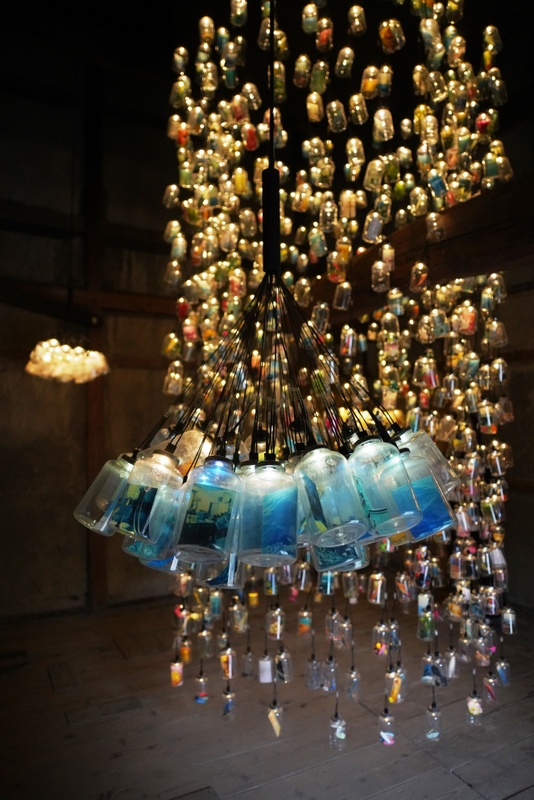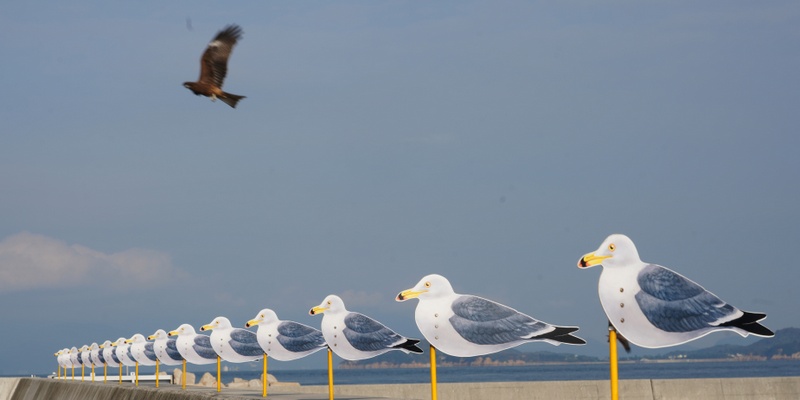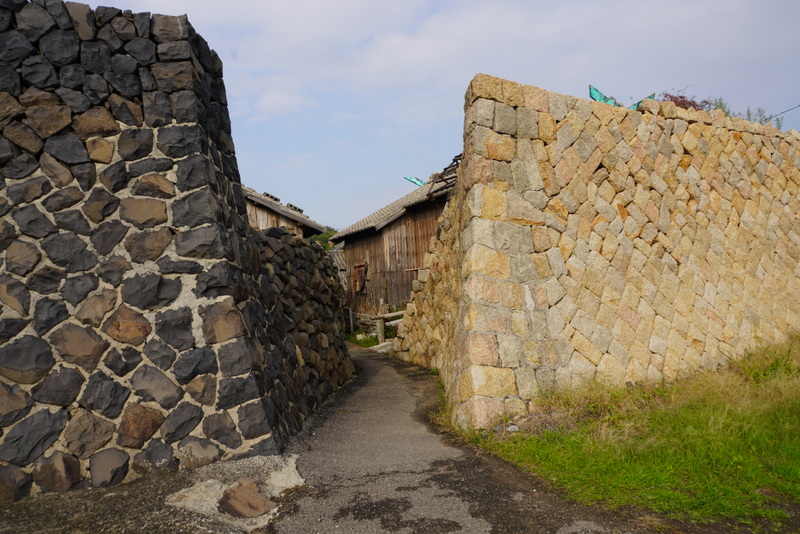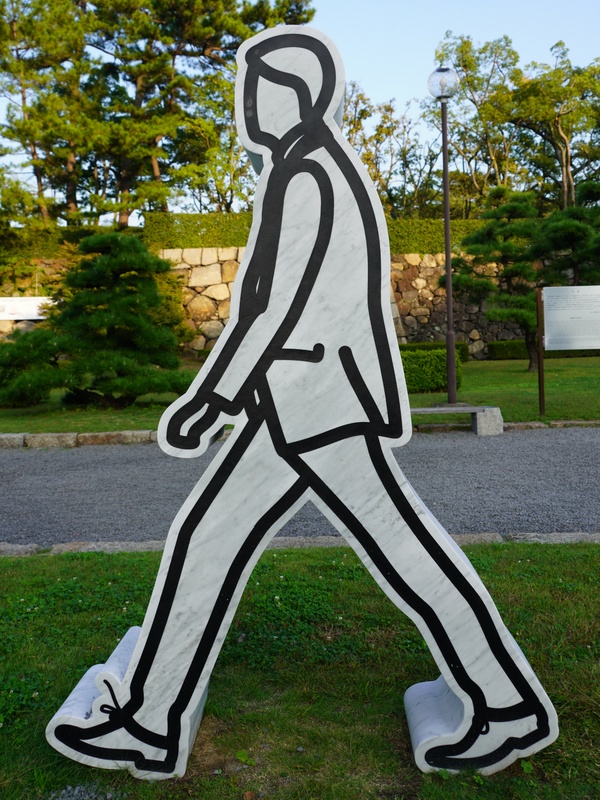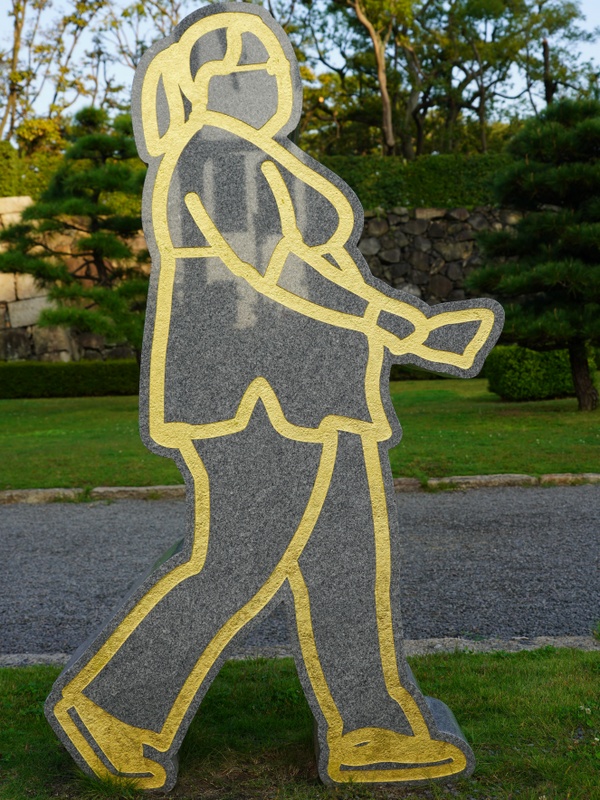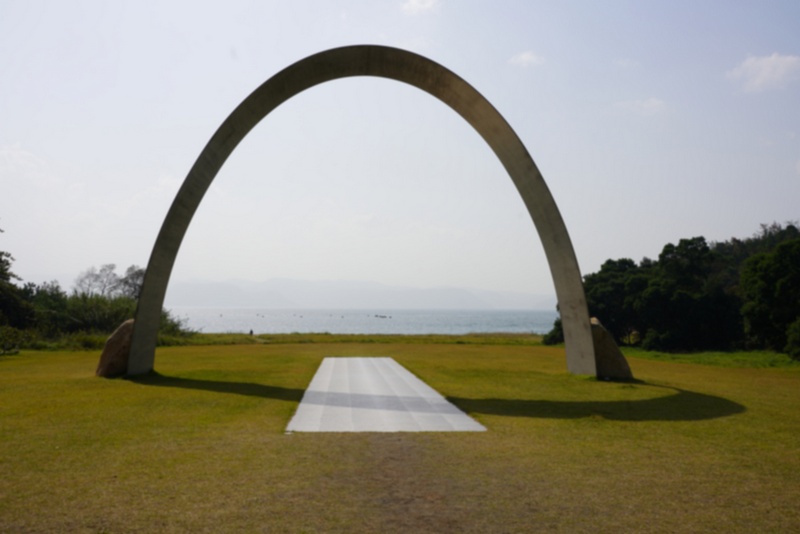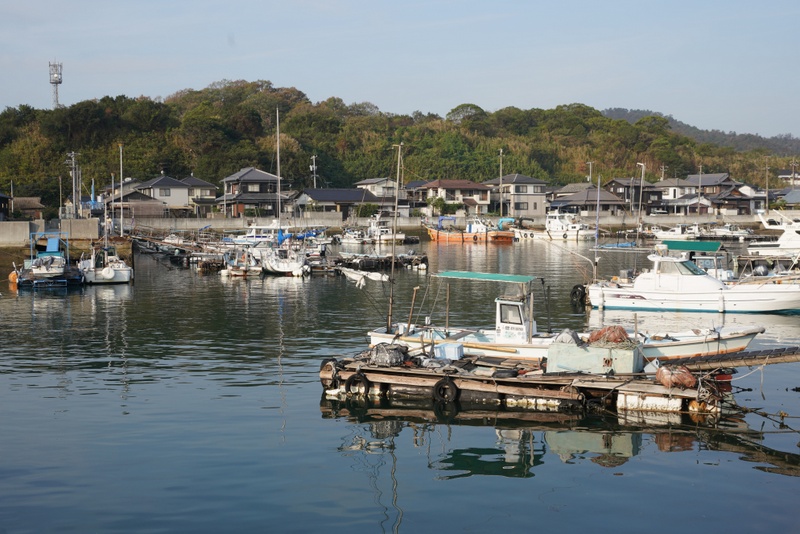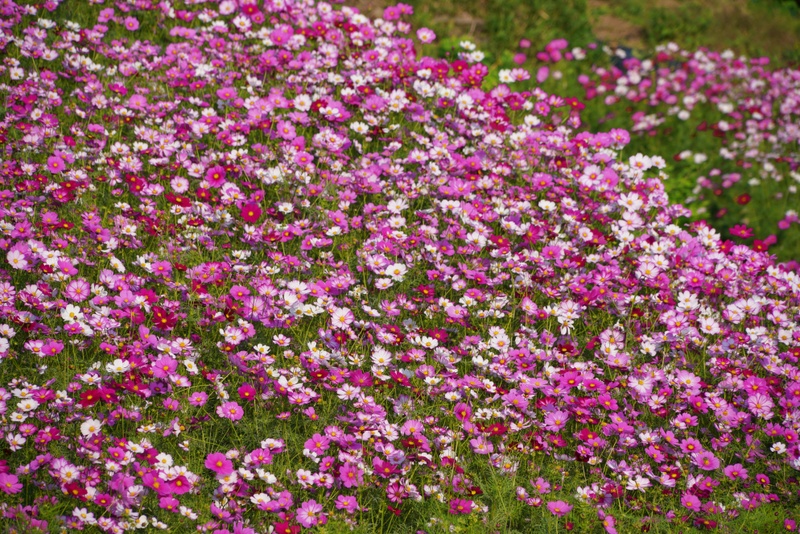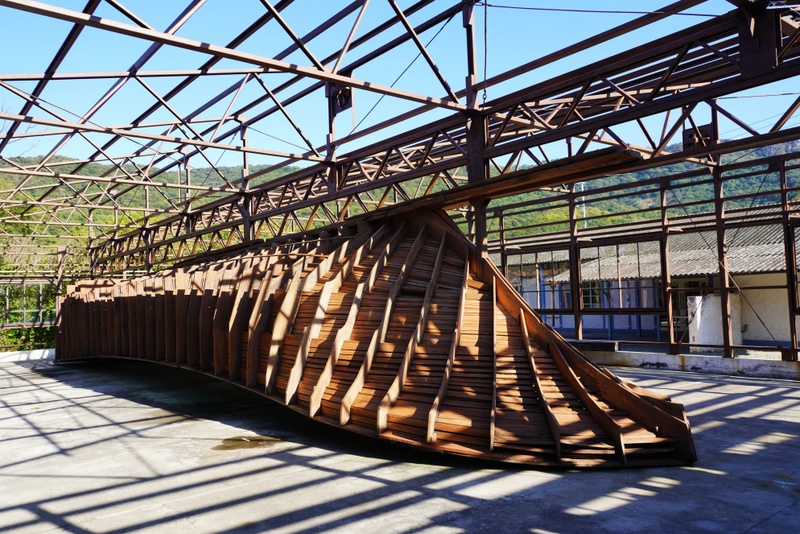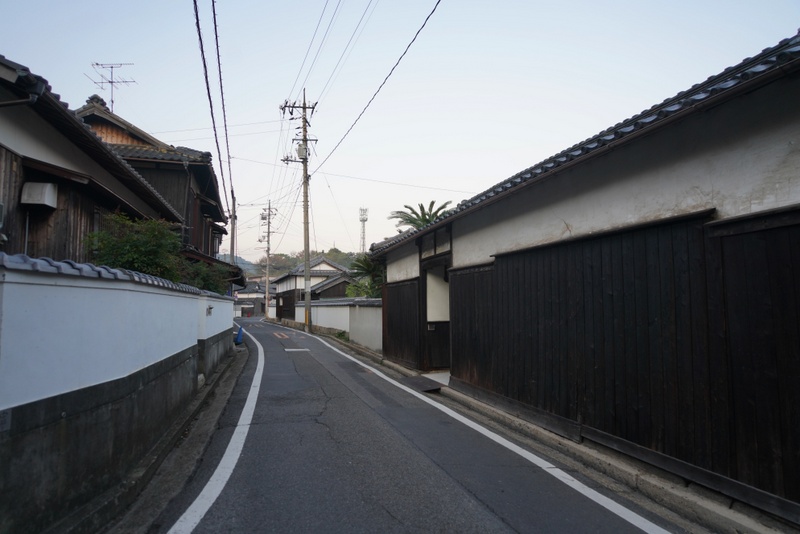My plan to visit the Setouchi Triennale was derailed in April when I had to return to Hong Kong to apply for a Russian visa in connection with an expedition to Wrangle Island in July. As the Triennale would finish on November 4, I left Hong Kong ten days after completion of my ‘4-Lands’ tour. After enjoying the art festival, I joined a temple tour to Kyoto. On top of art, cultural and spiritual activities, I roamed on my own for ten days in search of foliage.
Setouchi Triennale October 29 – November 4, 2019
The Setouchi Triennale (also known as the Setouchi International Art Festival) is a contemporary art festival held once every three years. Contemporary art has gained prominence in the region in recent decades owing to several high-profile art projects by the Benesse Corporation on the islands of Naoshima, Inujima and Teshima.
The festival first held in 2010, is intended to further strength the region’s position as a leading site for contemporary art. One of its aims is to revitalise the islands in a sustainable and creative way by bringing contemporary art and tourism onto the islands.
During the festival, many new artworks by artists from Japan and overseas are exhibited on twelve islands in Seto Inland Sea and around the ports of Takamatsu and Uno in addition to considerable number of museums and artworks already in existence. They may stand outdoors in the field, along the coast or in villages. Others make use of the numerous old homes which have been left abandoned due to depopulation. The buildings are employed as exhibition spaces or have been converted into artworks themselves. Some of the artwork will remain on the islands after the festival.

Visitors can buy a full pass for the entire festival which runs from late April to November 4 for ¥4,800 or a seasonal one for spring, summer or autumn for ¥4,000. During the autumn exhibition season, the greatest number of artworks would be exhibited. With a pass, one can see most of the artworks and museums for free with the exception of Chichu Art Museum (¥2,060) and Teshima Art Museum (¥1,570) and a few installations. Visitors are advised to book tickets online for the two musems in advance. To facilitate island hopping, a 3-day ferry pass is available for ¥2,500.
My Island-hopping Plan
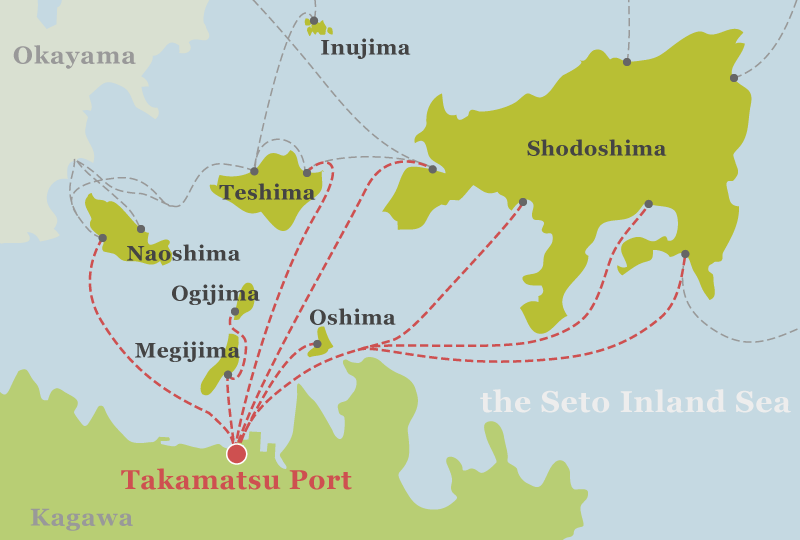
While many visitors use Takamatsu as a base and make day trips to different islands, I prefer to stay on the islands. In this way, I would enjoy the islands more and have a better feel about the life on the island. I booked accommodation for seven nights on two islands namely Naoshima and Shodoshima. I would travel light and take a carry-on suitcase and a backpack. But owing to poor planning and late booking, I ended up sampling four small guesthouses and three hotels. Kai, my university friend, joined my island hopping for six days.
October 28 Monday: Hong Kong (UTC +8)– Takamatsu, Shikoku (UTC +9)
Given the troubles caused by protesters in Hong Kong, I took a taxi to the airport. I left home at 5:30 am and was already at the airport by 6 am. As my plane would not leave till 9 am, I had a nice breakfast at the lounge. After a 3-hour flight, I landed in Takamatsu airport after 1:30 pm local time. The plane was full. It took me a while to go through immigration. By the time I got my luggage and came out, it was almost 2:30 pm.

This is my fourth visit to Shikoku and third visit to Takamatsu. I took the airport bus (¥780) to the bus terminal by the ferry. My hotel, Hyper Inn, is about 150m away. It was almost 4 pm when I ventured out to explore the port area. I got my passport for the festival and found out where to get a 3-day ferry pass.
While strolling around the port, I saw the first artwork of festival – ‘Beyond the Border – the Ocean’ by Lin Shuen Long, a Taiwanese artist by the port. The work constructed with wood, looked like a gigantic nest with large art space inside. Next to the pier was ‘Liminal Air-core’ which are two tall columns by Shini Ohmaki. After a sashimi dinner, I went to bed early.
October 29 Tuesday: Ogijima, Megijima & Naoshima
I checked out early, bought a 3-day ferry pass at the pier and embarked on a ferry at 8 am to Ogijima 男木島, a charming little fishing village measuring about 2 km long and less than a kilometre wide. It is picturesque with houses scattering on hillside overlooking the ferry port with a beautifully designed visitor centre.
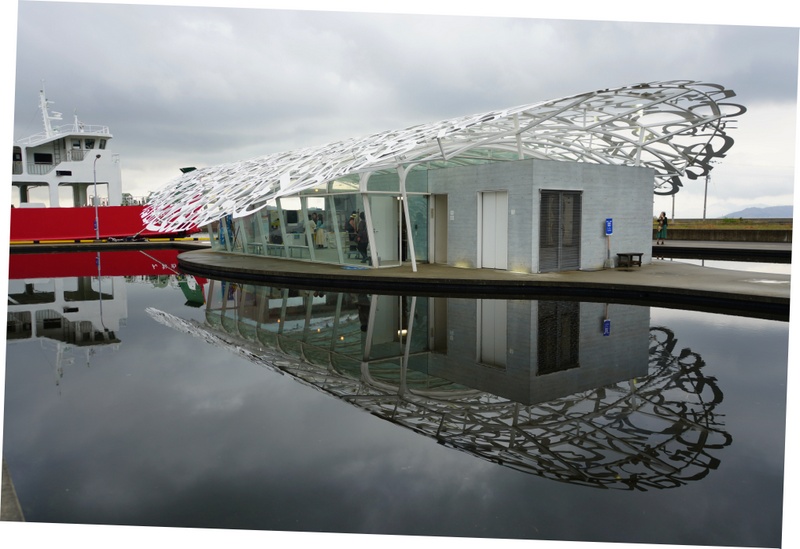
It was drizzling and the sky was grey. I walked with my umbrella. A total of 17 art sites scattered all over the island. Luckily, they were within a short walk of the ferry terminal with good signage.
Within two hours, I explored the inhabited area of the village on foot seeing a total of 12 sites. Of the artworks I have seen, I like “The Space Flower · Dance · Ring” by a Japanese artist inside a traditional house with a window looking out at the sea. The flowers made with porcelain look like dancing in space.

Another piece of artwork I like is “Akinorium” by Akinori Matsumoto who creatively turned a small traditional house with a loft into a concert hall. Fun and childlike simple musical instruments hanging from the roof or scattering on the floor played a lovely tune.

Akinorium

At 11 am, I took a ferry to Megijima 女木島, the legendary Onigashima from the Momotaro story. It has an area of 2.66km2 with a population of around 200. The crossing only took 20 minutes.
There are 21 sites with artworks including four which require entrance fee. Upon arrival, I took a bus to visit the Onigashima Caves (bus fare ¥400 each way and entrance fee ¥400).
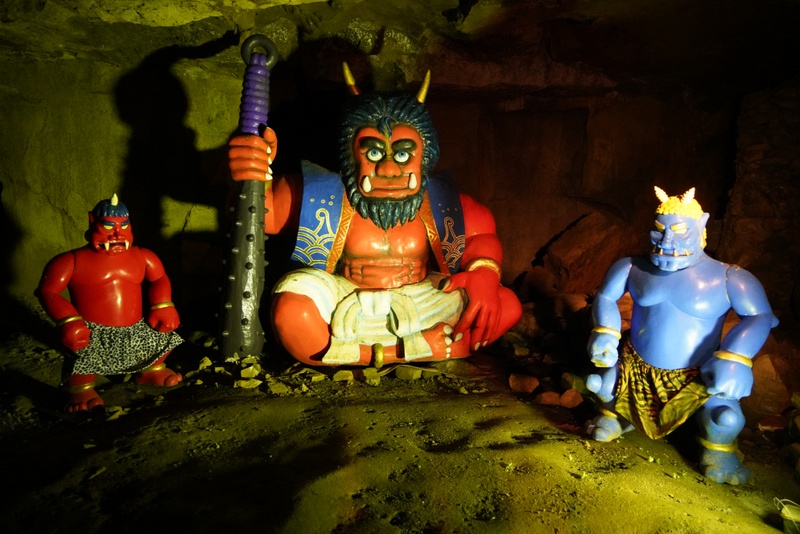
The caves are sizeable. I must have walked several hundred metres through various tunnels. Some caves are large and one houses a temple.
During the festival, the caves were turned into an art space. The “Oninoko Tile Projects” have put inside the caves hundreds of tiles in all sizes of the images of Onigashima. They can look like devils especially in the dark corners.
After the caves, I walked uphill to a viewing platform at the top of the hill which is the highest point on the island. I had panoramic views of the Seto Inland Sea, Takamatsu and some of the islands. The bus headed back to the ferry terminal shortly after 12 noon.

I spent the next three hours wandering around the area close to the pier looking at artworks. The island is known for its Information Centre which was designed by Ando and the “Sea Gulls Parking Lot” by Takahito Kimura. These sea gulls which look real, have become an icon of the island.
Out of these 18 sites I visited, I have a few favourites.
First, “Bonsai deepening roots” by Masahi Hiro x SETOUCHI COGEIZ whose work was displayed in three zones. The traditional house with a serene Japanese garden provides a great setting for the bonsai master to create his work.

Bonsai
The first zone “Memory” served to retain many memories with space / scene/ time / interaction / knowledge / and feeling through the bonsai workshop called “Shima-BON” among with visitors, artists, and islands. Visitors could connect the bridge between “Shima-BON” (symbolising “past”) and “KUON” by Hiro with “Wedge” (wood picks) for this exhibition as a part of bonsai work shop.
The second zone was called “Space”. It is an epitome of present situation, surroundings, and community of Megijima.
The third zone “Life” contained installations used wooden vessel called “ten-bon / sui-bon” for Bonsai vessel which crumble to the dust, back to the dirt, and then provide nutrients to plants, indicates enormous amount of timeless time.
Second, “Terrace Winds” by Yasuyoshi Sugiura standing in the field captures my imagination.

Terrace Wind 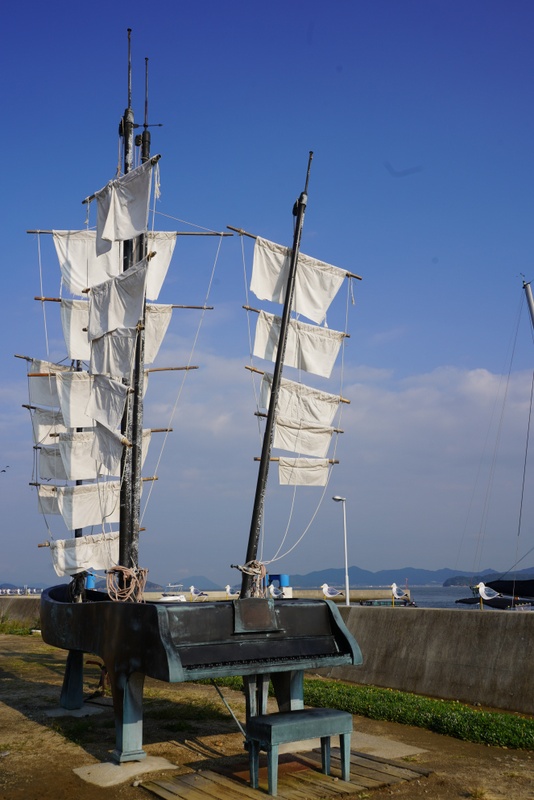
Third, “ISLAND THEATRE MEGI” by Yoichiro Yoda. In this project, an abandoned factory building was turned into the Empire Theatre in New York City. Inside, a film he made on how the entire theatre building was moved to its present site, was shown. I shall look at this theatre with fresh eye on my next visit to New York.
There is another project of interest to me. I found an artist from Hong Kong in the “Little Shops on the Island” project which had eight installations. His name is Leong Ko Tai and the Red Thread and his artwork was called “Wedding Shop”. After having interviewed a few married couples from Megijima, he documented how they have found their better half from the same island. This is what the Chinese call the ‘Red Thread’!

I enjoyed strolling aimlessly on the island. The weather had improved with sunshine and blue sky. The laid back and traditional life style on the island is amazing.
I took the 3:3 pm ferry back to Takamatsu. My next ferry was to Naoshima at 6:05 pm. I went to the Takamatsu Art Museum which has a couple of sections free for passport holders. On my way, I saw another outdoor artwork “Banker, Nurse, Detective, Lawyer”by Julian Opie located outside the Tamamo Park.
I am not impressed by the exhibits on display on the ground floor of the Art Museum. I find the shopping streets more interesting. There are many European brands. As the city is not big and relatively quiet, I wonder how the shops survive.

I took the 6:05 pm ferry to Miyanoura Port in Naoshima. My three ferry journeys today cost just under ¥1,700. I actually made a loss on the pass as I did not use it for the next two days.
I stayed in a Japanese guesthouse Yado Hoshikuzu not far from the pier. The spacious house is over 100 years old. Kai who arrived in the late afternoon found his way to Naoshima by taking a high-speed ferry for ¥1,200. (He did well without a ferry pass!)
We met an interesting couple from Barcelona. The lady is a Spanish artist while the man is a Japanese architect who has his own studio. We talked about Tadao Ando’s architecture and exchanged views on exhibits we had seen so far.
October 30 Wednesday: Naoshima
No one comes to Naoshima 直島without seeing the masterpieces of Tadao Ando on the island. Born in 1941 in Osaka, Ando is an internationally acclaimed architect who has been closely involved in creating today’s Naoshima. His creations and buildings including the Oval (Benesse Hotel), Benesse House Museum, Chichu Art Museum, Benesse House Park and Beach, Lee Ufan Museum, Minamidera and Ando Museum, have all been designed with an emphasis on activating and inheriting the beautiful landscape of the Seto Inland Sea. Visitors can see how his concept of “Coexistence of Nature, Architecture and Art” shapes his buildings.

Naoshima a small island with an area of about 14 km2 and a population of over 3,000, is the prime site for the festival. There are 25 artwork sites including four requiring additional payment. Most people even without any idea of the festival would recognise the iconic Red and Yellow Pumpkins by Yayoi Kusama.
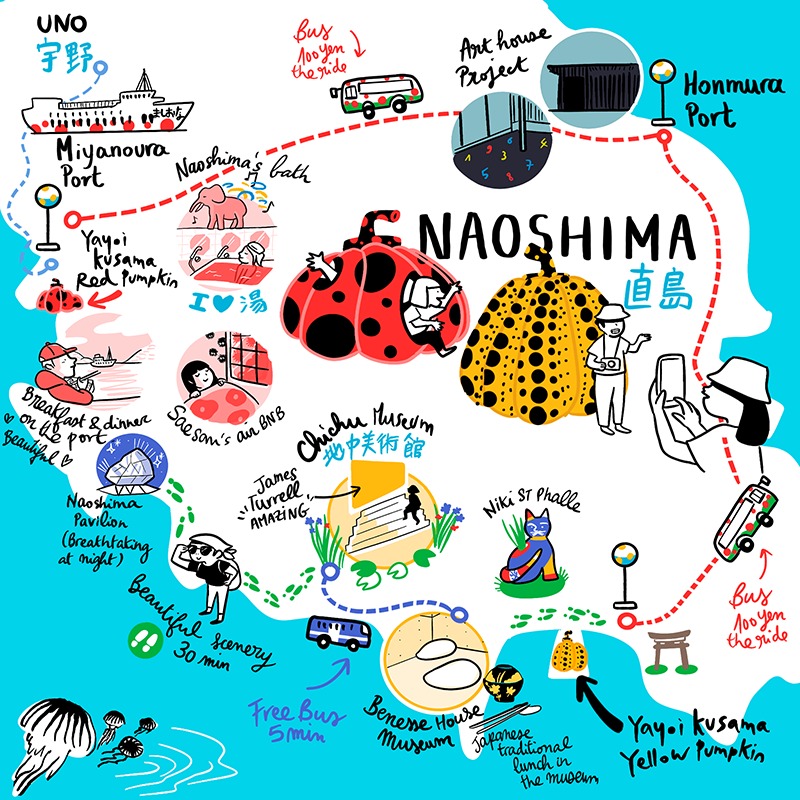
We had a leisurely full day on the island. We began our day by walking from the port to the Chichu Art Museum. During the 30-minute walk, we saw a few outdoor artworks along the route including the “Red Pumpkin” (2006) by the ferry terminal and ‘Naoshima Pavillion’. I saw so much today. A recap is useful.
Chichu Art Museum (constructed in 2004)
It is my second experience with Ando’s creation (the first was the Toto Hotel in Awaiji earlier this year). The museum was built mostly underground to avoid affecting the beautiful natural scenery of the Seto Inland Sea. It has been described as a “site for rethinking the relationship between mankind and nature”.
There are four exhibition rooms/space. Artworks of Claude Monet, James Turrell and Walter De Marie are on permanent display.
The entire museum in itself is a huge site-specific artwork. The design is simple but stunning. Natural lights bring out the magics of Monet’s waterlilies and the serenity and heavenly feel of De Marie’s cathedral-like hall – ‘Time/Timeless/No Time’.
I spent over half an hour sitting outside the café looking at the Seto Inland Sea. Ando is truly a great master in creating beauty, art and harmony between human and the environment.
Lee Ufan Museum (opened in 2010)
Born in 1936 in Korea, Lee is a famous Korean artist. His artworks and Ando’s architecture blend in with the surroundings. A visit to this museum is another occasion for quiet contemplation.
Before entering the museum, visitors pass the Pole Place dominated by a simple granite pole. I was captivated by the simplicity and linear presentation which leaves much room for one’s imagination.
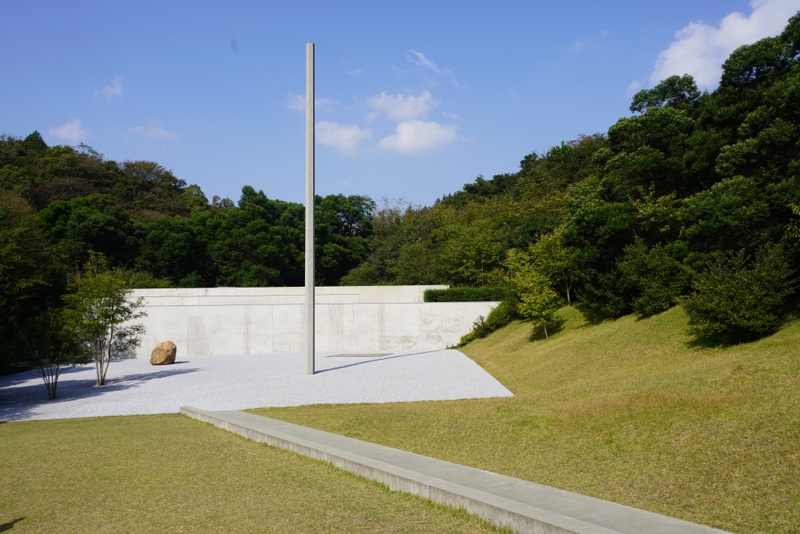
I walked through a corridor with high concrete walls leading to the Correspondence Place. In the middle of the place is a steel plate and natural stone with a ‘zen’ feel. The cool and serene high walls and corridors, angles of light and shadow are typical of Ando’s buildings.
Inside the museum, there are few rooms to house Li’s artworks.
Void with oil, stone pigment on canvass
Encounter Room with several paintings
Silence Room with steel plate and natural stone
Shadow Room with natural stone, acrylic on the floor and projection
Meditation Room with wall painting in white
There is more to see and experience outside. I find “Porte vers l’infini” – stainless steel and natural stone, most impressive and awesome.
Then we walked uphill to reach the Benesse House Museum (1992) which has a rich contemporary art collection. The terrace offers superb view of the sea, the beach below and surrounding areas.
We had an enjoyable but fairly expensive lunch (¥6,315) at the terrace restaurant. Kai had a bento lunch box which was beautifully presented while I had a delicious chirashi bowl. Nonetheless, I find it value-for-money given the exquisitely beautiful surrounding, high quality of food and excellent presentation.
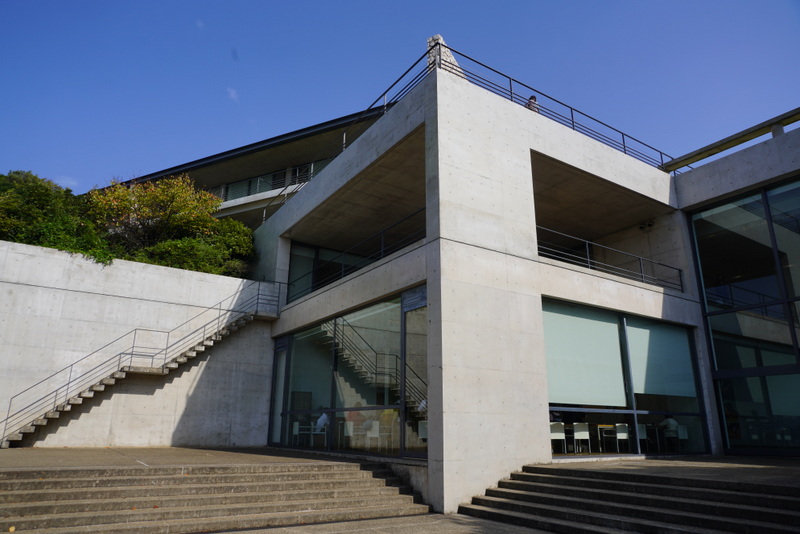
After lunch, we continued with our exploration and saw three more outdoor presentation below the Benesse House Museum.
- “Cultural Melting Bath” by Cai Guo-Qiang. A group of Chinese Taihu stones for turning life energy and an American made Jacuzzi where people can actually take a bath symbolize a mixture of the Eastern and Western cultures and a timeless crossing of traditional and contemporary.
- “Seen / Unseen Known / Unknown” by Walter De Maria with two black granite spheres and a wooden object. What is the meaning of this work? The artist never talks about his work. It is up to viewers to interpret!
- “Drink a Cup of Tea” by Kazuo Katase. It stands on a slightly elevated hill with a view overlooking the sea and looks as it is saying “Please have a cup of tea”. It is said that this work suggests an exchange between Japanese culture and other cultures.

We walked downhill and saw a group of colourful artworks comprising cat, camel, elephant, frog and cat etc by Karel Appel and Niki de Saint Phalle in the beach park.
Finally, we reached the yellow “Pumpkin”, Yayoi Kusama’s first outdoor sculpture in 1994.
We took a bus to return to Miyanoura Port (¥100). We explored the port area on foot and visited two sites.
“Naoshima Bath” created by Shinro Ohtake. I am curious about the artwork inside this traditional public bath and I love to go and take a bath to see the art installation. But I had no time.
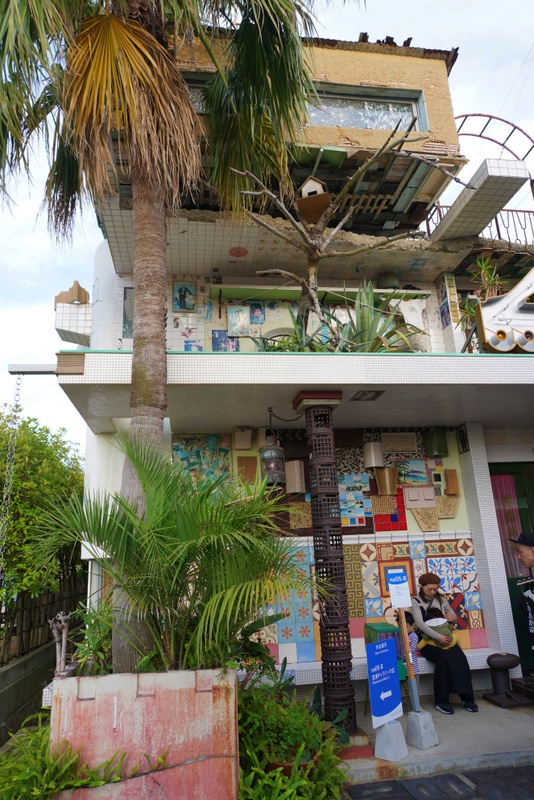
“Miyanoura Gallery” designed by Taira Nishizawa. We went to the gallery and saw its first museum project on ‘Yoichi Midorikawa’ (1915-2001). Born in Okayama Prefecture, he was one of Japan’s foremost photographers. In his “Shiroi-mura” (White Village, 1954) series, he photographed the post-war industries and people of Setouchi from a unique perspective: he used documentary techniques with painterly methods.
We took a bus to Honmura where we would spend two nights. (Now that I know the island better, I would prefer to stay in the same place). The Guest House SHELL is right by the fishing harbour. Tonight, over ten Chinese guests from the Mainland, Taiwan and Hong Kong stayed in this small guesthouse.
Honmura is small fishing village not yet spoilt by tourism. I like its rustic and laid-back atmosphere. The sun set around 5 pm: everything seemed to come to a stop. I hardly saw anyone on the narrow alleys.
Luckily, we found a nice seafood family restaurant – Yayoda. I paid ¥1,500 for a delicious sashimi dinner set. The sashimi was even better than those I had in the afternoon at the Benesse House Museum. We enjoyed the food so much that we returned the following night.
October 31 Thursday: Teshima Island
Ieura Port is only served by a high-speed ferry from Honmura. takes 20 minutes. I had to pay ¥630 for a 20-minute ride. Kai and I were in Teshima, another major site of the festival before 9 am.

There are 20 locations on Teshima 豊島which has an area of 14.5 km2 and a population of about 1,000. As usual works were placed all over the island. We first took the 9:25 am bus to the Teshima Art Museum located on a hill in the Karato – Oka area and overlooking the Seto Inland Sea. While the standard bus fare on Naoshima is ¥100, it is ¥200 in Teshima.

Designed by Rei Naito, an artist born in 1961 and Ryue Nishizawa, an architect born in 1966, the museum was opened in 2010. It is an artwork in itself located next to Mt. Myojin and surrounded by rice terraces on a hill side facing the Seto Inland Sea.
The museum, a concrete shell measuring 4.5m high at the most and 40 by 60 m wide, is best explained through its own words printed on its leaflet-
“The thin concrete shell structure has no pillars and the installation space is open to air, sounds and natural light that flood in from two openings in the ceiling. Inside, water continuously springs from the ground. The atmosphere changes not only with the time of day. But as the seasons pass. The Teshima Art Museum evokes the joys of living. As art, architecture, and the environment come together as one”.
We were admitted at 10:30 am. All visitors have to follow a path at the bottom of Mt. Myojin before entering the art space. Walking slowly in silence and looking at the woodland, I had peace of mind.
Once stepping into the void, I felt I had entered another world. I sat down and watched water springing continuously from the floor. The slow running water bought life creating ever changing patterns and shapes on the concrete floor. One can spend the whole day here meditating, watching the light flooding in, the ever – changing light and the sounds of nature. It is a wonderful experience!
Shortly after 11 am, Kai and I continued our hike to the Karato Port which had a few artwork installations including “Les Archives du Coeur” by Christian Boltanski by the beach. The project is all about the sound of people’s heartbeats he has recorded all over the world.
We took a bus shortly after 1 pm to Shimizu which had a few installations including “Particles in the Air” by Noe Aoki, Shima Kitchen by Ryo Abe and “Your First Colour” by Pipilotti Rist. I did not find anything particular.
An hour later, we took a bus heading back to the pier. At last, I saw two interesting artworks before leaving the island.
“Needle Factory” by Shinro Ohtake who installed a wooden hull-form used in the manufacturing of red snapper net fishing boats with the art space created by a sewing needles factory which was abandoned in 1980s. The hull had never served its original purpose after it was built in a shipyard in Uwajima some 30 years ago. Each carries its own memories. The artist has succeeded in creating an artwork that makes an impression on viewers.
“Teshima Yokoo House” a collaboration between artist Tadanori Yokoo and architect Yuko Nagayama. They created the house by altering and renovating an old private house located not far from the port. They made use of the house’s existing layout and divided the exhibition areas into a “Main House”, a “Warehouse” and an “Outhouse”, displaying 11 two-dimensional works. Colourful installations are also displayed in a stone garden with a pond and a cylindrical tower. I walked through the buildings and had to grope in the dark briefly when walking upstairs. I like the artwork but confess I cannot apprehend its meanings.
After having visited nine locations in Teshima, we took the high-speed ferry at 3:10 pm. As we were back in Honmura soon after 3:30 pm, we had time for a couple of artworks in Honmura.
First, we visited the Ando Museum which is about the architect’s creative ideas and styles and his works that have transformed Naoshima into an art island. Now, this small museum fills the original structure with new life through its concrete interior. The exhibition space combining old and new, wooden and concrete, and light and dark elements takes a new aspect with lights coming through and creating shadows which are typical of his buildings. There are displays on his buildings in Naoshima and the Row House and Church of Light in Osaka.
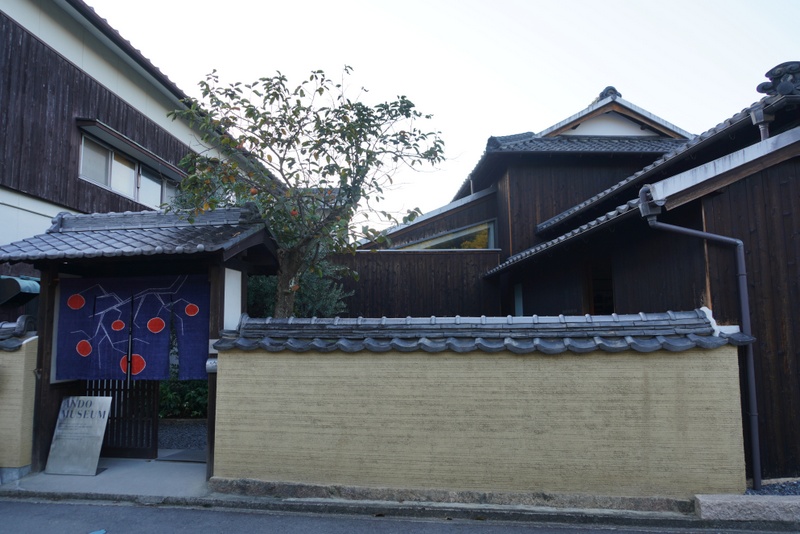
Then we went to see “Minamidera” (completed in 1999) as one of the “Art House Project” in Honmura. Artists have taken many empty houses scattered about residential areas and turned the spaces into works of art, weaving in the history and memories of the period when the buildings were lived and used. Altogether, there are seven houses under this project.
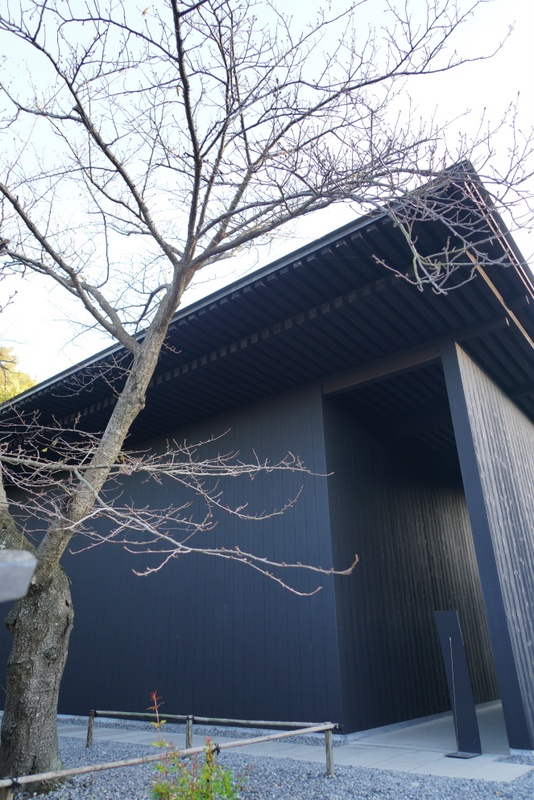
Designed by Ando, Minamidera has been built on a site of an old temple. The inner artwork was done by James Turrell. I was not prepared for the experience: we entered the building which was pitch-dark. I moved slowly with one hand on the wall. We were led to sit down on a bench against a wall and stared in the void. Once our eyes got used to darkness, we began to see light. But the guide said that there was no light inside the building. I still doubt it. Is this supposed to be a journey of self-discovery?
Unfortunately, I only visited one more house “Gokaisho” under this project before the closing time at 4:30 pm.
Tonight, we stayed in Guesthouse Oomiyake whose elderly owner speaks English. Though he looks cool, he is humorous and helpful once he knows you. His family owns a lot of land and his guesthouse seems to be very popular. We returned to Yayoda for dinner. I had grilled fish and sashimi.





